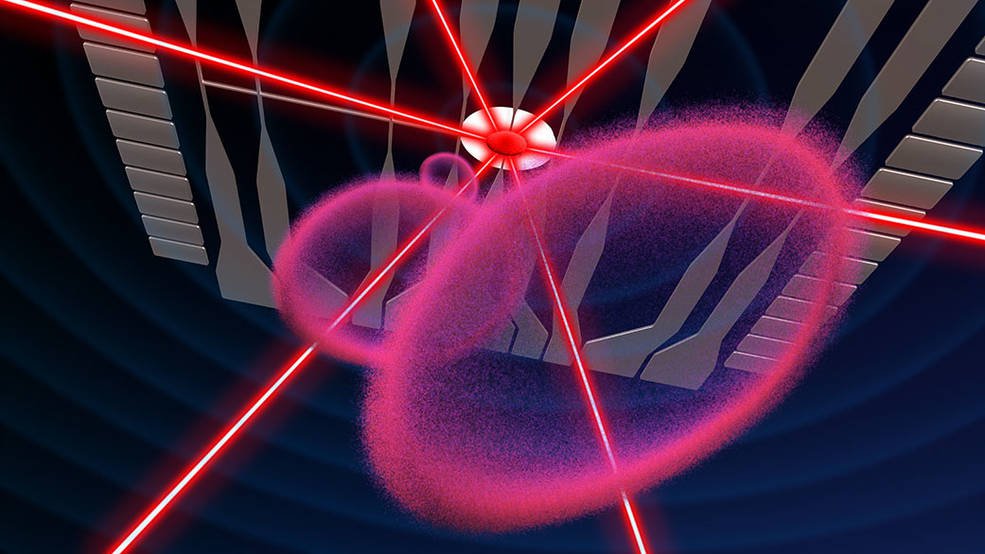News | June 6, 2022, 6:21 p.m.
Ultracold Bubbles on Space Station Open New Paths for Quantum Research

Produced inside NASA’s Cold Atom Lab, the bubbles provide new opportunities to experiment with an exotic state of matter.
Since the days of NASA’s Apollo program, astronauts have documented (and contended with) how liquids behave differently in microgravity than they do on Earth – coalescing into floating spheres instead of bottom-heavy droplets. Now, researchers have demonstrated this effect with a much more exotic material: gas cooled to nearly absolute zero (minus 459 degrees Fahrenheit, or minus 273 degrees Celsius), the lowest temperature matter can reach.
Using NASA’s Cold Atom Lab, the first-ever quantum physics facility aboard the International Space Station, researchers took samples of atoms cooled to within a millionth of a degree above absolute zero and shaped them into extremely thin, hollow spheres. The cold gas starts out in a small, round blob, like an egg yolk, and is sculpted into something more like a thin eggshell. On Earth, similar attempts fall flat: The atoms pool downward, forming something closer in shape to a contact lens than a bubble.
The milestone – described in a new paper published online Wednesday, May 18, in the journal Nature – is only possible in the microgravity environment on the space station.
The ultracold bubbles could eventually be used in new kinds of experiments with an even more exotic material: a fifth state of matter (distinct from gases, liquids, solids, and plasmas) called a Bose-Einstein condensate (BEC). In a BEC, scientists can observe the quantum properties of atoms at a scale visible to the naked eye. For instance, atoms and particles sometimes behave like solid objects and sometimes behave like waves – a quantum property called “wave-particle duality.”
The work requires no astronaut assistance. The ultracold bubbles are made inside Cold Atom Lab’s tightly sealed vacuum chamber using magnetic fields to gently manipulate the gas into different shapes. And the lab itself – which is about the size of a minifridge – is operated remotely from JPL.
The largest bubbles are about 1 millimeter in diameter and 1 micron thick (that’s one-thousandth of a millimeter, or 0.00004 inches). They are so thin and dilute that only thousands of atoms compose them. By comparison, a cubic millimeter of air on Earth contains somewhere around a billion trillion molecules.
“These are not like your average soap bubbles,” said David Aveline, lead author on the new work and a member of the Cold Atom Lab science team at NASA’s Jet Propulsion Laboratory in Southern California. “Nothing that we know of in nature gets as cold as the atomic gases produced in Cold Atom Lab. So we start with this very unique gas and study how it behaves when shaped into fundamentally different geometries. And, historically, when a material is manipulated in this way, very interesting physics can emerge, as well as new applications.”
Read the full article here
